Xose, who has been baking bread all his life in the small Galician town of Pontedeume, he assures that, when he was a child, going into the walking trails of the dense forests of the Fragas do Eume –without signaling at that time– it was something that chilled his blood and attracted him, irresistibly, in equal parts.
That distant childhood appears diffuse in his memory, as if enveloped in the mist that came punctually to his date with every sunrise in the forest.
However, his eyes shine, and his look rejuvenates a few decades, when he talks about something he will never forget: “ We played with them goblins and witches and they taught us some magical recipe that I still prepare today when my grandchildren are a little pachuchos”.
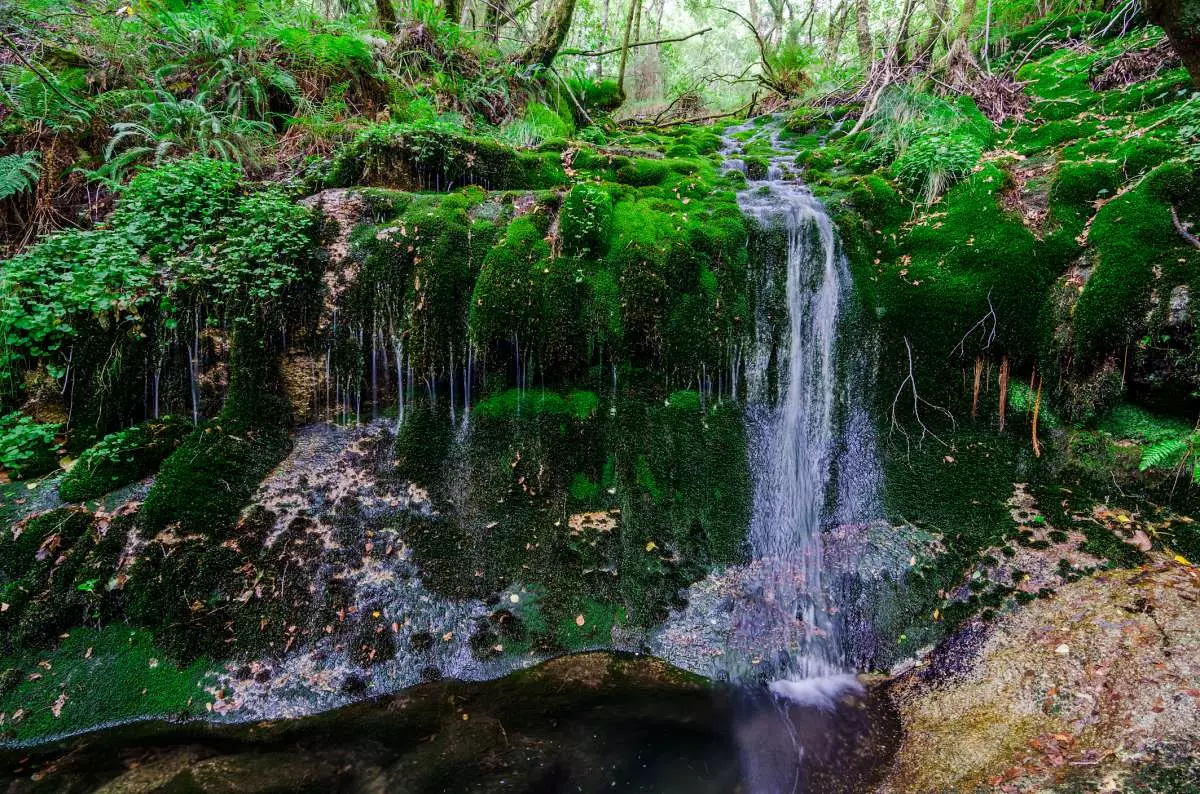
Prehistoric beauty of nature.
And it is that everything seems possible, and completely real, when we go into the foliage of one of the best preserved Atlantic riparian forests in Europe. Fragas do Eume is one of the six natural parks in Galicia.
next to the crazy waters of the river Eume, inhabit more than a hundred species of vertebrates, 15 amphibians and 14 reptiles, all of them sheltered under the branches of oak, birch, ash, poplar, chestnut, alder and nothing less than 28 different species of ferns, that prehistoric beauty that still endures in our forests.
To get lost in this fraga is to rediscover the origins of man and nature, but also with the culture and ancient traditions, that here take the form of monasteries, mills and even ethnographic museums.
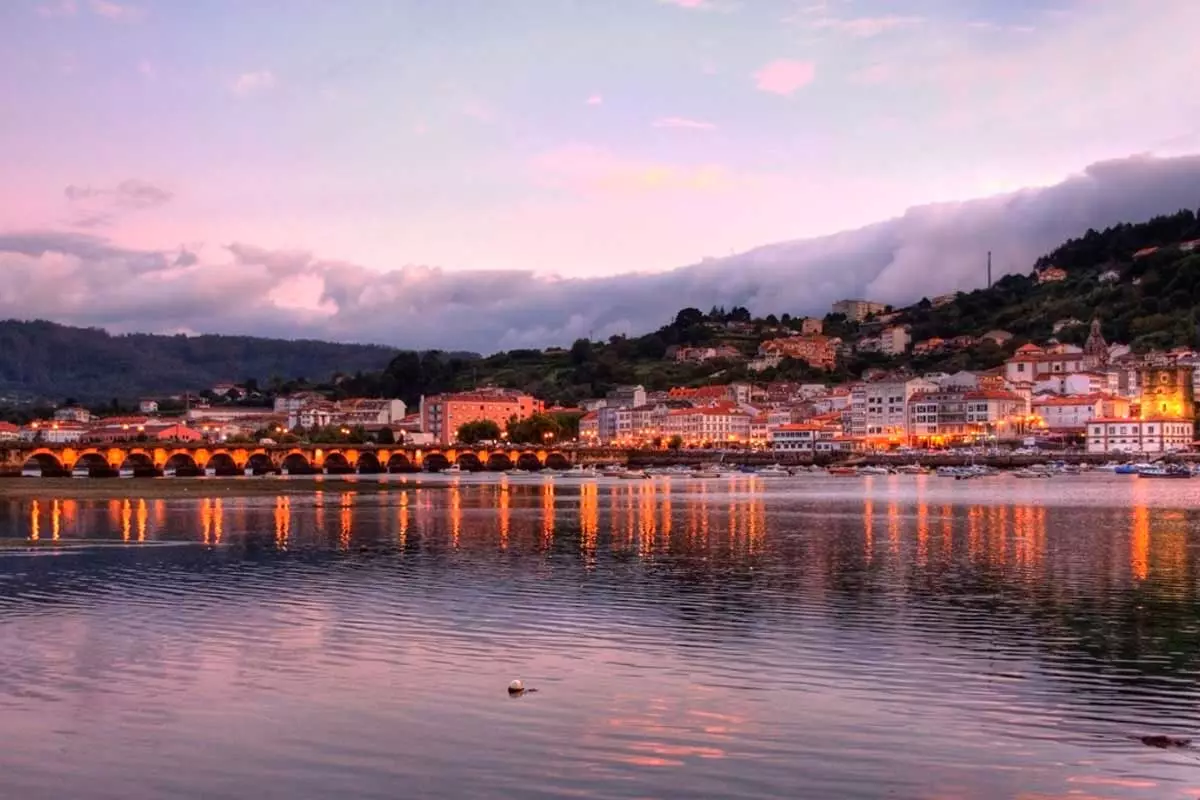
Pontedeum, a stone's throw away.
ONE OF THE BEST DEPARTURES ON THE ENGLISH WAY
Not many people know that one of the variants of Santiago's road, the english way, passes through the town of Pontedeume, one of the few inhabited areas in the Fragas do Eume natural park –where there are barely 500 people on the census–, and a place where the river that gives life to the fraga empties into the ocean waters.
The English Way has, in turn, two variants: one from Ferrol and another, shorter, part of to Coruna. The route from Ferrol has about 112 kilometers spread over five easy stages (with recommended overnight stays in Neda, Miño, Bruma, Sigüeiro and Santiago de Compostela ) and passes through Pontedeume on its second day. It is at this point where it is convenient to turn off and enter the paths that pierce the Fragas do Eume.
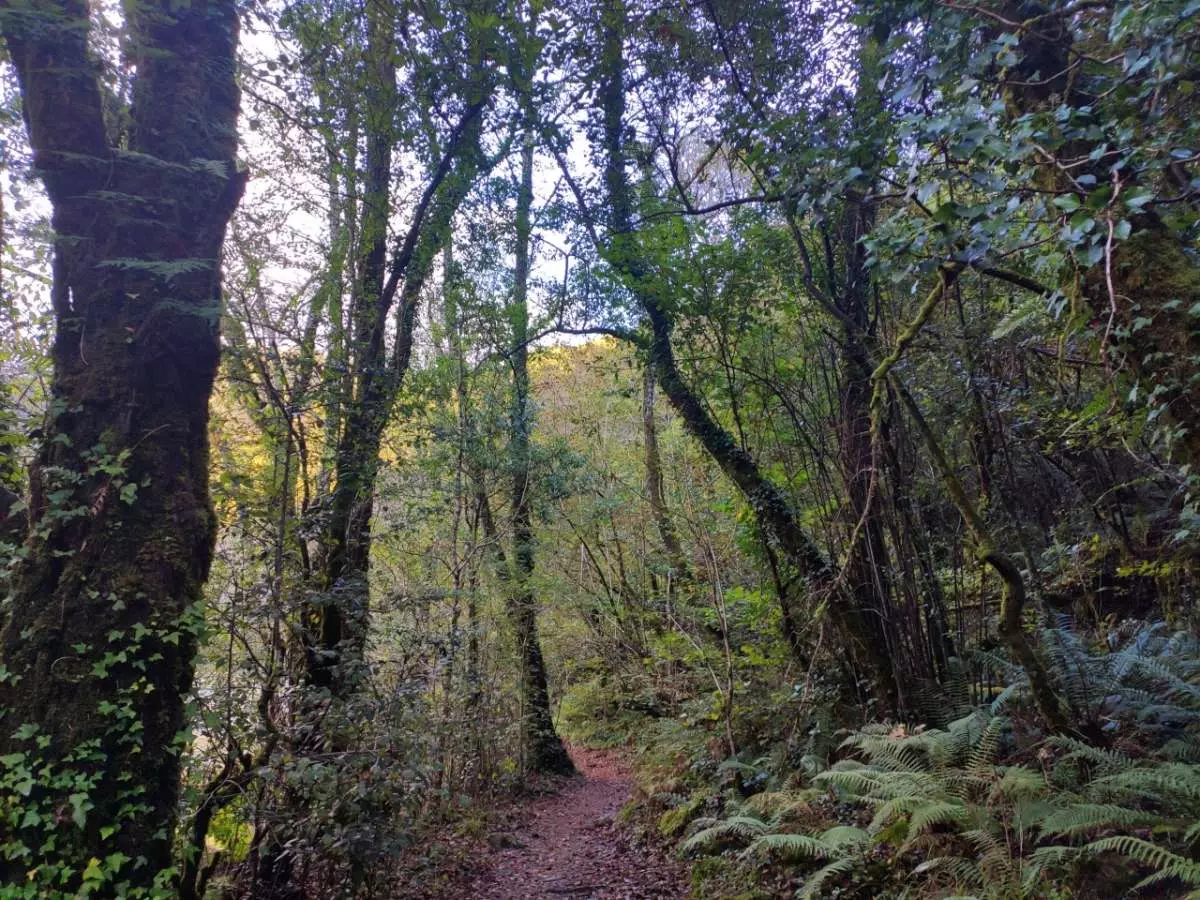
Wrapped by nature.
PATHS FULL OF MAGIC
Although we are not doing the English Way, if we like hiking we will greatly enjoy this beautiful natural setting. The many and varied routes found here are suitable for any type of hiker and pass through suspension bridges, forest patches (so dense that sunlight can barely break through the branches), old dams, mills, churches and much more.
Three of the best tracks are the Os Cerqueiros Road, the Camino da Ventureira and Camino dos Encomendeiros. The Camino de Os Cerqueiros is a route of about 8.5 kilometers that gives us the best aerial views of the area and a good approach to the different park ecosystems.
Part of the pine forests of the highest areas, and from the Carbueira viewpoint we will be able to appreciate the vast extension of the natural park and the capricious turns of a river that looks like a beautiful turquoise color from above. Later, it descends to the fragas covered by mantles of lichens, very close to the Eume reservoir.
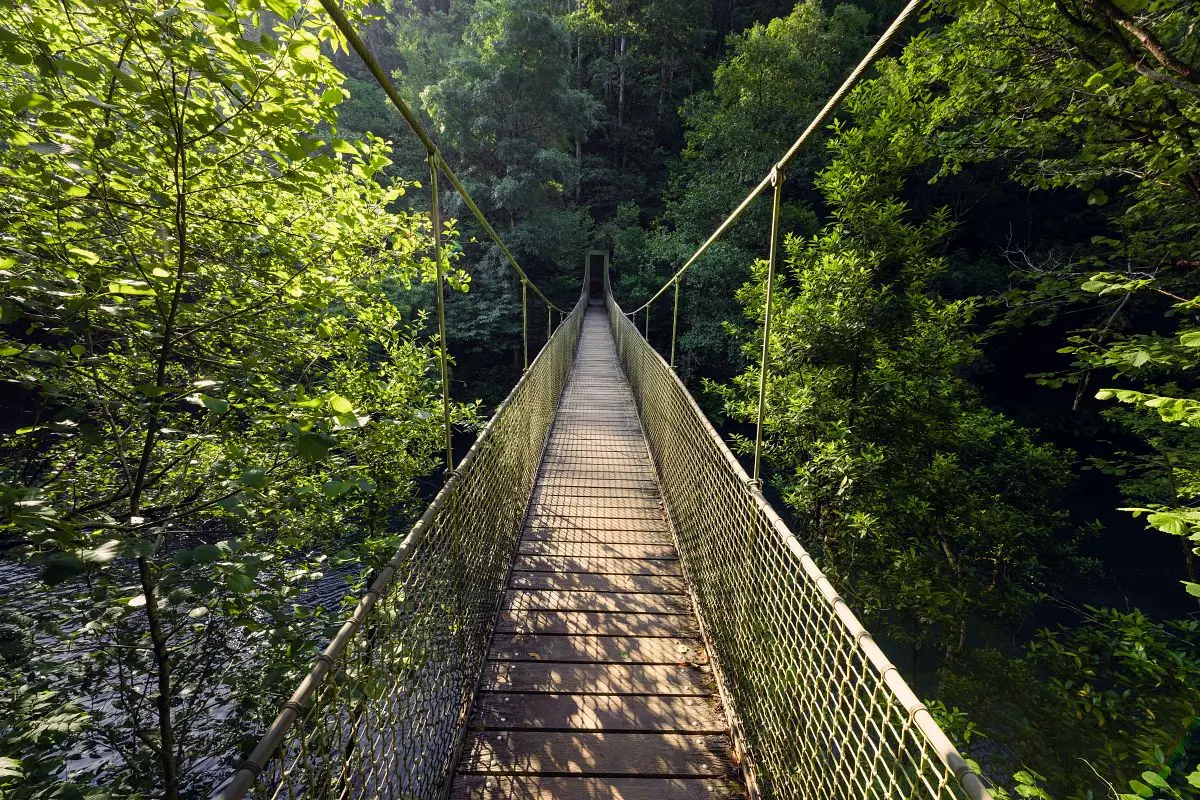
The suspension bridge of Fornelos.
The Road to A Ventureira It shows us the footprint of the human being in the area. through a precious narrow path, Hardly frequented and totally immersed in the forest, it reveals the Parrote mini-power plant and offers good views of the Caaveiro Monastery.
However, it is the Path of the Encomendeiros the most popular trail. Although it has different variants, the most common is the one that joins the bridges of Cal Grande and Santa Cristina, going through the suspension bridge of Fornelos. Along the way we can enjoy the forests, the waters of the Eume and Sesín rivers, and the magnificent Caaveiro Monastery.
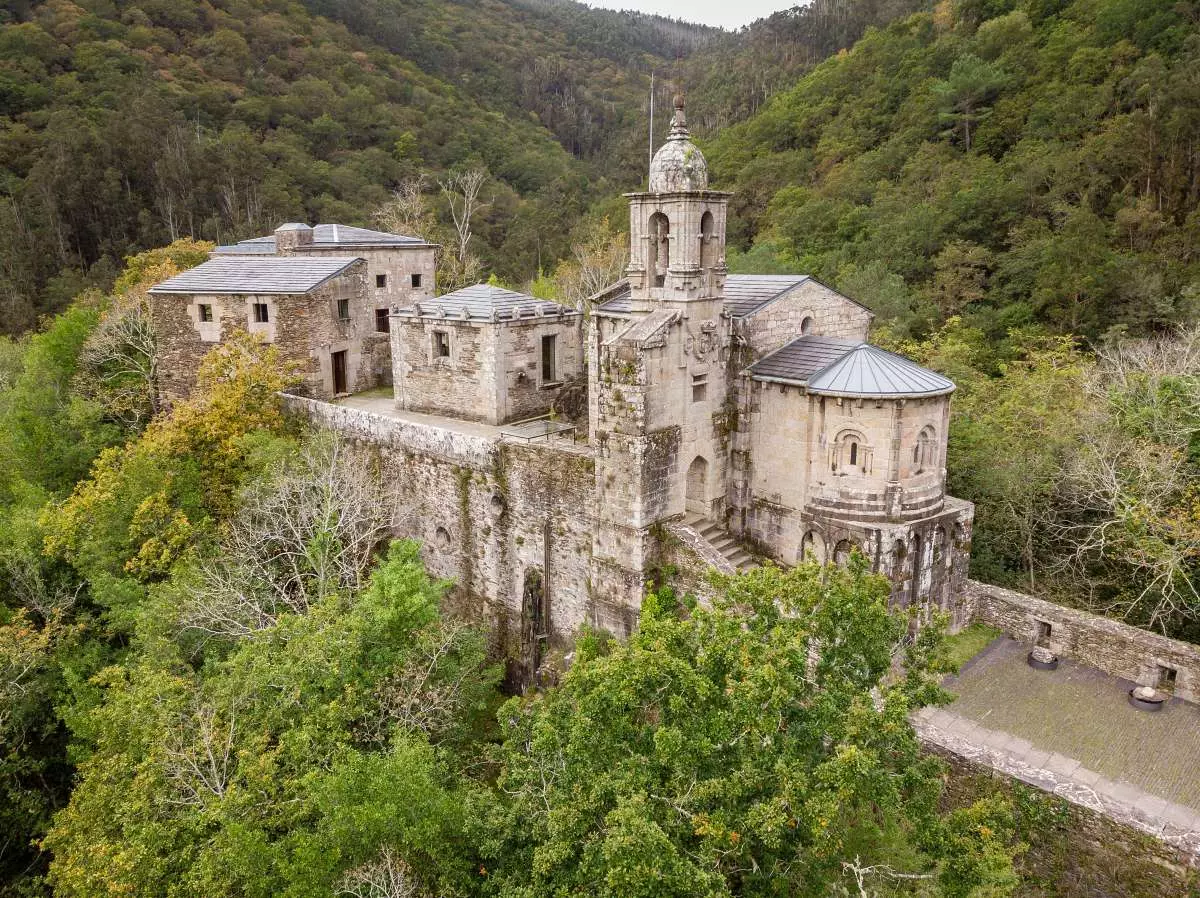
The Caaveiro Monastery, away from the world.
THE CAAVEIRO MONASTERY, A MILLENARY PLACE OF RETREAT
The first time we contemplate the silhouette of the Caaveiro Monastery it usually turns out for us incredible that it could have been raised in a place like that. And it is that it seems to maintain its balance on a narrow rocky cliff that rises between the waters of the Eume and Sesín rivers.
The prize for such daring and great architectural challenges It is spectacular views and an ideal peace for any type of retreat. And that is something that the monks and religious of the Orders of Saint Benedict and Saint Augustine who inhabited this place since at least the 10th century.
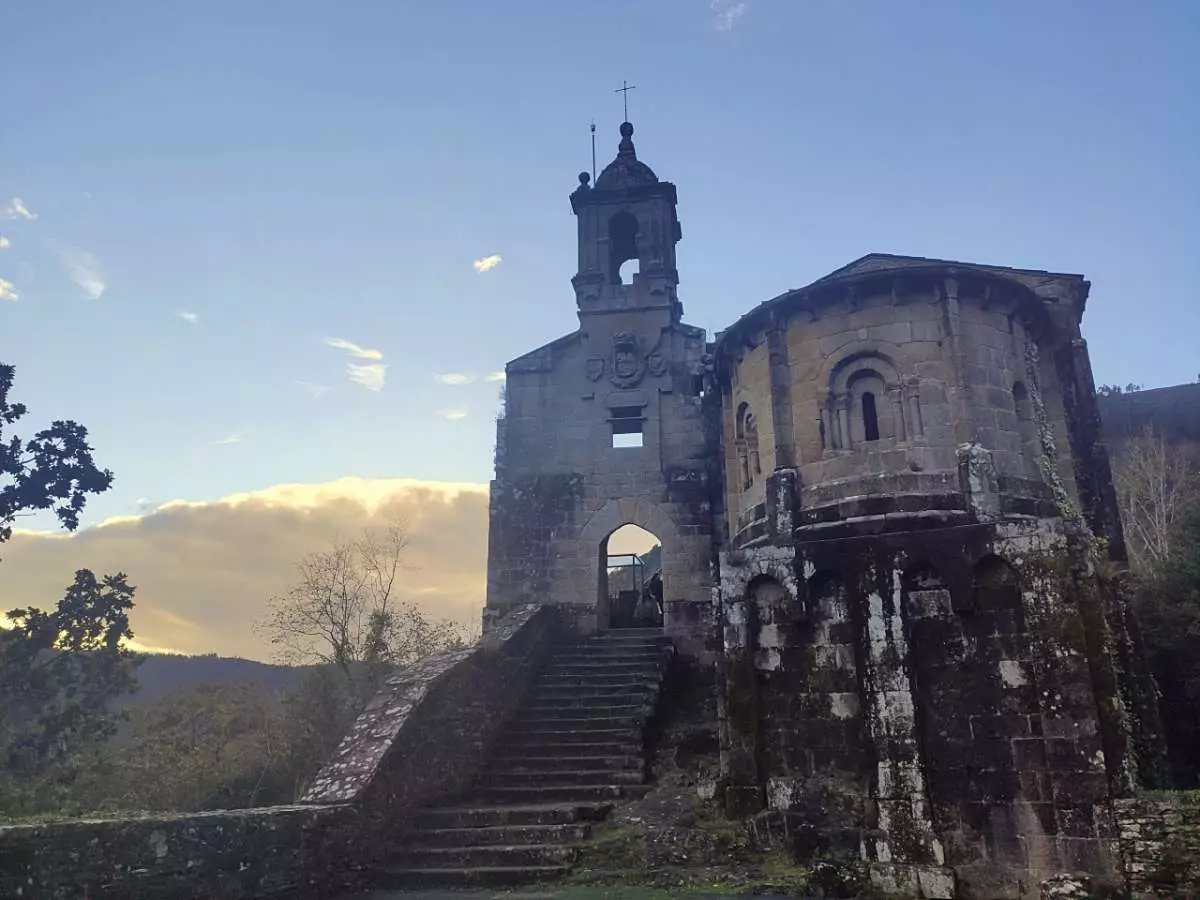
A temple shrouded in mystery.
The monastery underwent several reforms over the centuries and many parts of its original structure have been lost forever, however, you can still admire the chancel and nave original of the Romanesque temple, as well as a precious 18th century baroque bell tower, the kitchens and the house of the canons.
The renovation of some of these buildings has been done with great tact and following the patterns of the time, so the monastic ensemble shines today with great majesty and perfectly integrated into nature.
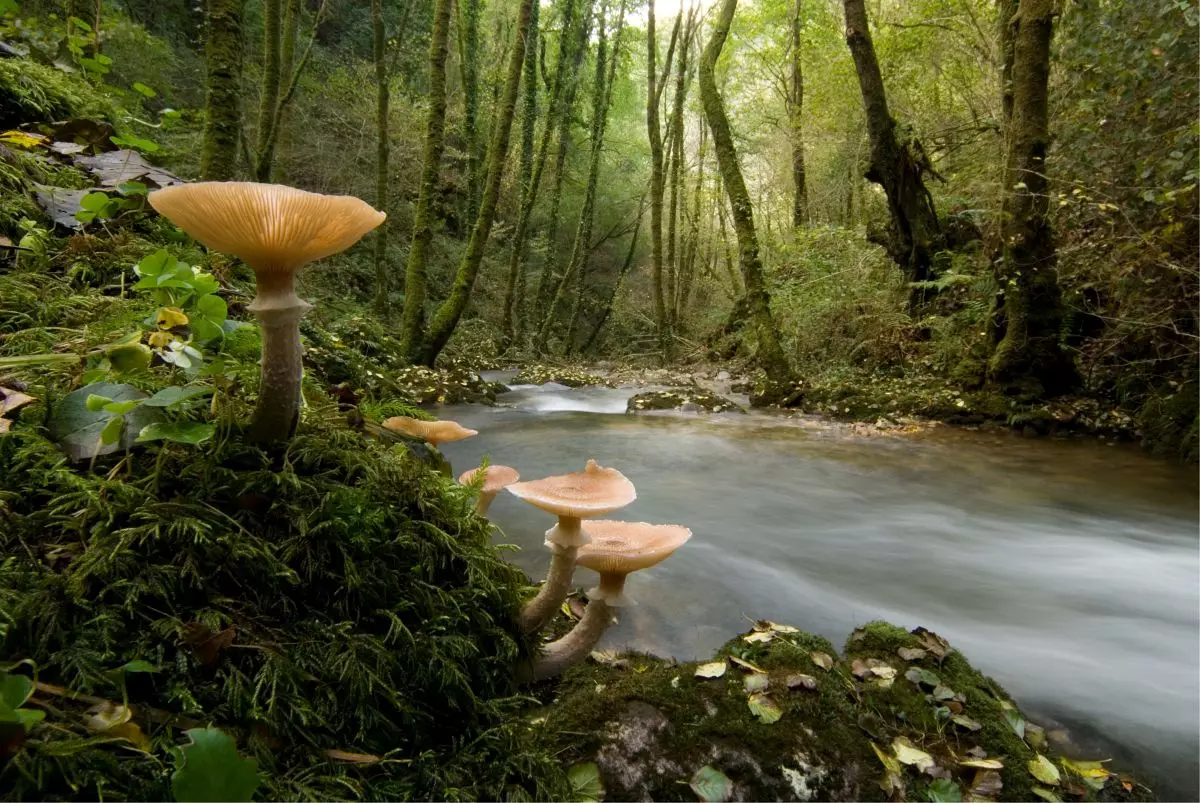
Where the meigas live.
LEGENDS AND MYTHS OF THE FRAGAS DO EUME
The oral tradition is something vital in Galicia. With a complicated orography, stories and news were often transmitted by word of mouth, from town to town, with the consequent healthy dose of fantasy who altered a story – which perhaps already had some magic from the beginning – to turn it into a fascinating adventure.
In the case of the Fragas do Eume, the very existence of the Eume River is already part of a fable. According to the legend, God created three rivers in the Sierra de Xistral: the Eume, the Sor and the Landro. In doing so, he promised them that the one who reached the sea first would obtain, as a reward, the offering of a man's life each year.
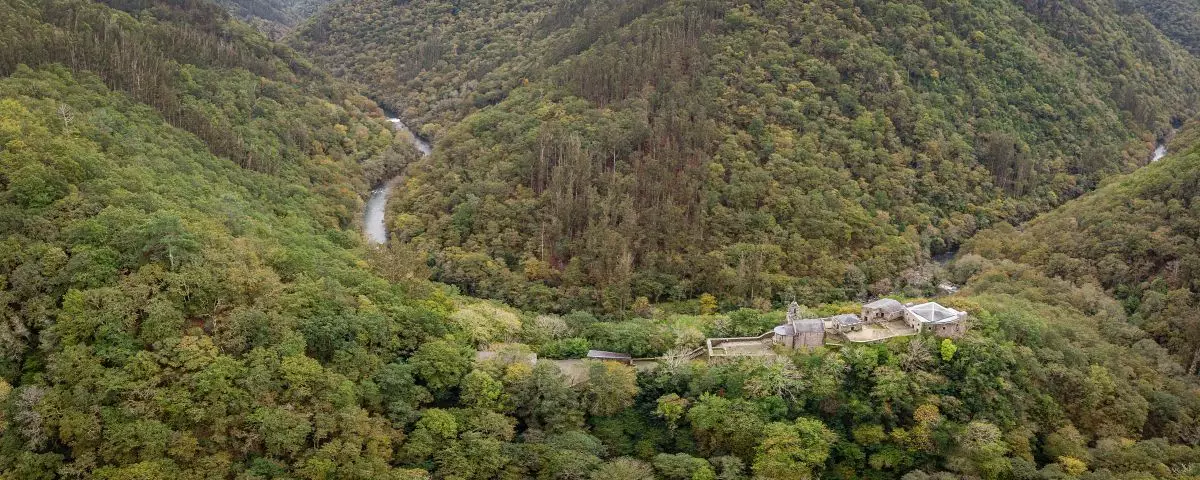
The park from a bird's eye view.
Initially, the three rivers reached a gentleman's agreement and promised to flow into the ocean waters at the same time. However, when resting the first night, the rivers Sor and Landro broke their word and left while Eume slept.
upon awakening, Eume reared up without measure and began to descend towards the sea with the fury of a hundred gods, crossing forests and forming valleys and waterfalls everywhere. Thus, he reached the sea before his competitors, who became mere tributaries.
Since then, the waters of the Eume have been truly rough, taking the lives of some reckless people. That –and obtaining hydroelectric power– was one of the reasons why they ended up damming it. another story are the goblins and meigas that swarm around the area. They say that they appear at night and, far from scaring or harming humans lost in the forest, they help them.
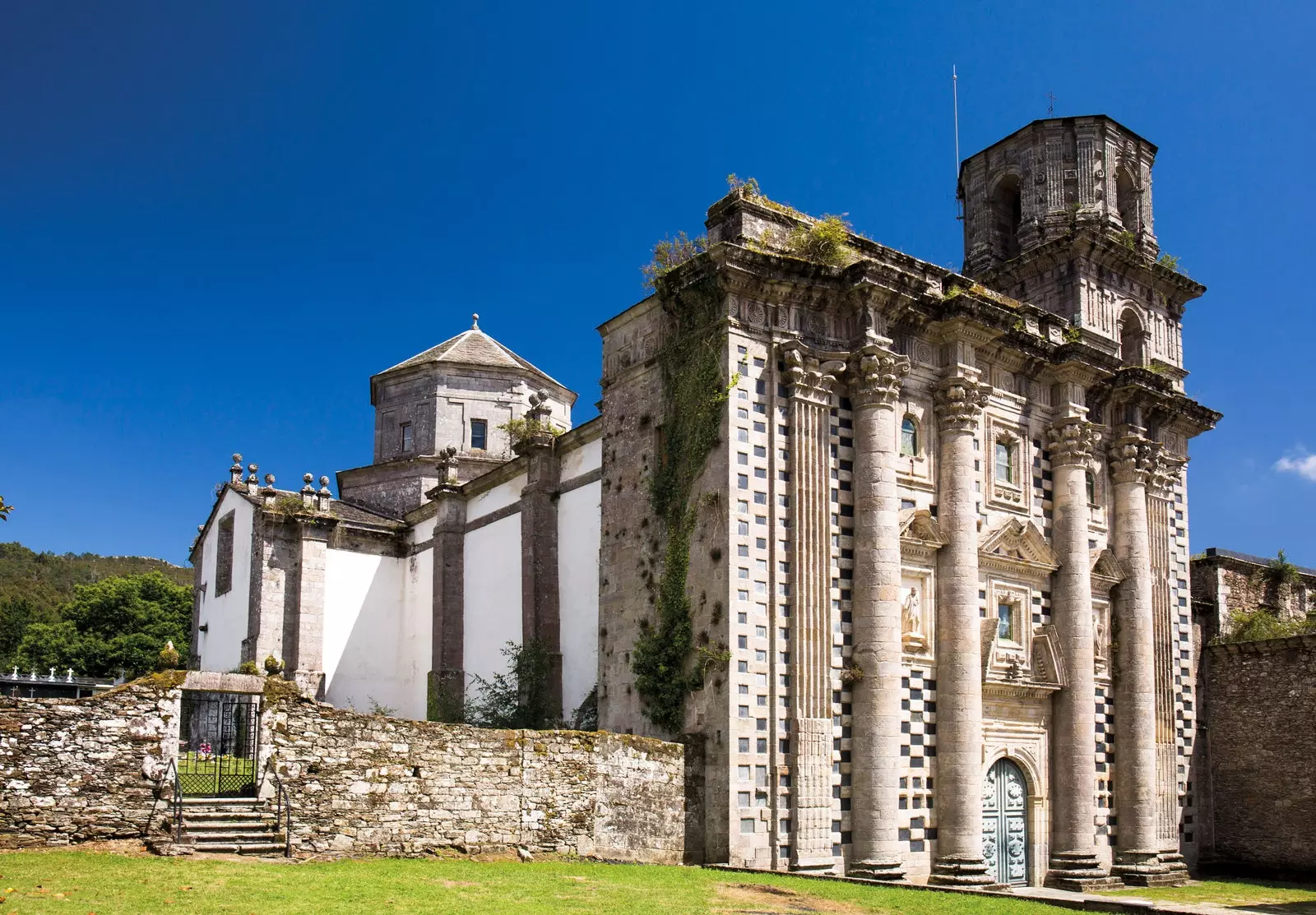
The Monastery of Santa Maria de Monfero.
OTHER DREAM PLACES IN THE SURROUNDINGS
We can spend a couple of days exploring the natural park of Fragas do Eume and then enjoy some of the attractions that its surroundings offer. This is the case of the town of Pontedeume, with that medieval air that is breathed in the tranquility of its streets.
Also interesting is the Andrade Castle, key piece of the revolution of the irmandiños and fantastic viewpoint to the Ares estuary; and the Monastery of Santa Maria de Monfero, less popular and crowded than Caaveiro, but almost as beautiful. All of them secret corners of an ancestral land where myths are confused with reality.
